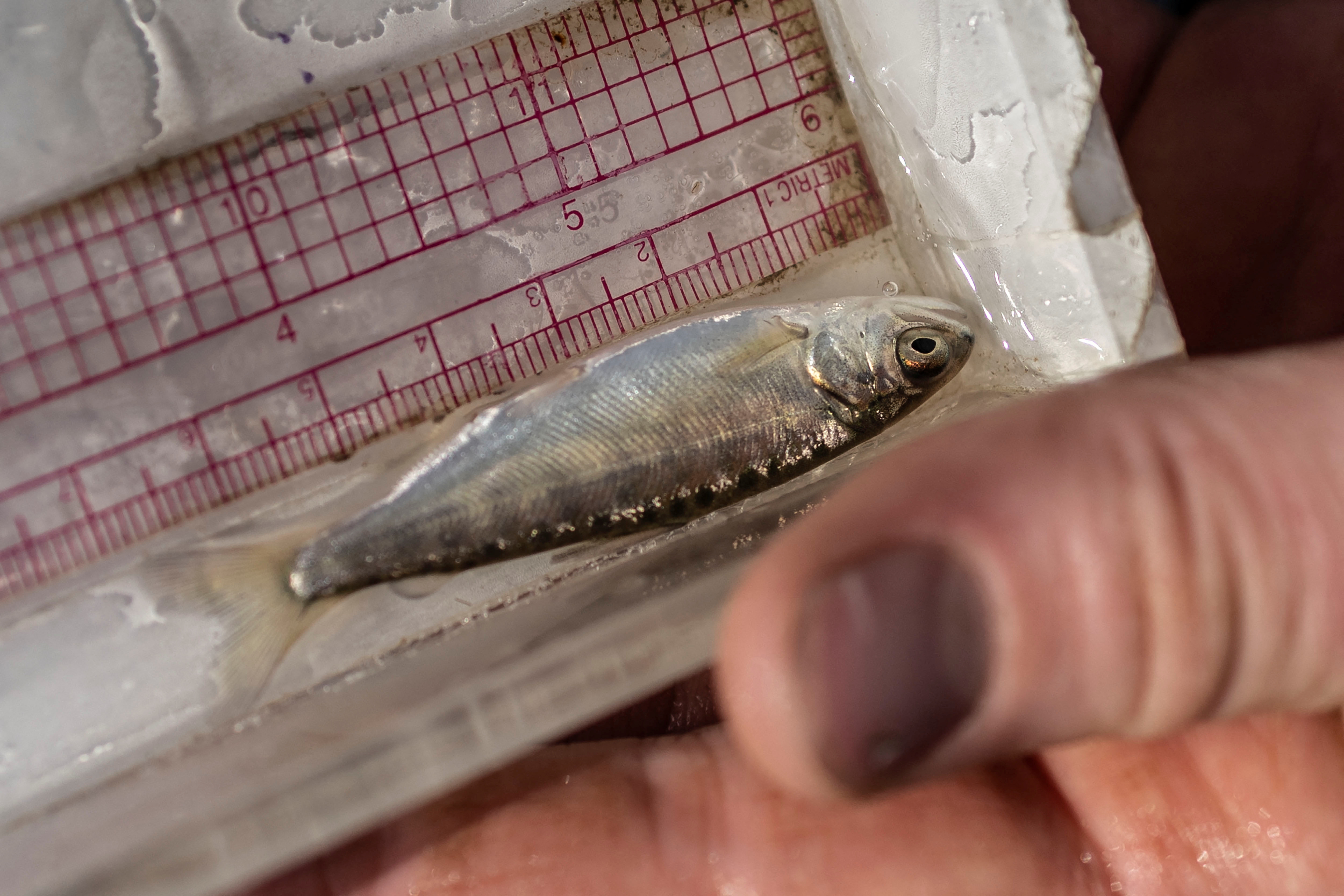US conservationists, farmers unite to protect salmon habitat
Sign up now: Get ST's newsletters delivered to your inbox

A researcher catches hatchery salmon from a tank to measure their size in Robbins, California, on Feb 4, 2022.
PHOTO: REUTERS
Follow topic:
CALIFORNIA (REUTERS) - In an experiment a decade in the making, United States biologists are releasing hatchery salmon onto flooded Northern California rice fields, seeking to replenish endangered fish species while simultaneously benefiting the farmers' business model.
At a time when environmentalists are often pitted against agribusinesses in California's water wars, conservation scientists and rice farmers are working together, trying to reclaim the great flood plains of the Sacramento River for salmon habitat.
Their task is daunting. California's wetlands have all but disappeared, converted into farms and cities in one of the great engineering feats, or environmental crimes, of the 20th century.
Now, for the cost and inconvenience of flooding their fields, rice farmers are earning goodwill and betting that a healthy salmon population will avoid new regulations to protect wildlife and keep adequate water flowing.
In recent years, biologists have discovered that as rice straw decomposes in flooded fields, it creates a broth rich in fish food. They call it "zoop soup".
"The zooplankton are so big and they're so juicy, it's like filet mignon," said Associate Professor Andrew Rypel, a professor of fish ecology at the University of California Davis (UC Davis) and lead investigator on the project.
After fattening up on their zooplankton, the salmon return to the river, swim downstream and beneath the Golden Gate Bridge on their way to sea, returning years later to spawn the next generation.
The university's researchers have joined the California Rice Commission, conservation group California Trout and the US Department of Agriculture on the project, seeking to reverse the trend towards dwindling fish populations as a result of human re-engineering of the state's waterways and, in recent years, extreme drought exacerbated by climate change.
"We don't want to just sit silently while extinctions happen," Prof Rypel said.
Before industrialisation, the northern end of California's Central Valley was a miles-wide flood plain straddling the Sacramento River - a natural feeding ground for fish.
After one too many floods in the city of Sacramento, and realising that Mississippi River-style levees were insufficient to contain the diluvial bounty, California built two bypasses in the Sacramento River for flood control and irrigation.
That land is ideal for farming rice, and about 500,000 acres (200,000ha) are under cultivation today.
Though the natural state will never be restored, the flood plain can reconnect to the river. Enhancing salmon habitat in the flood plains helps the fish grow big early in life, improving their chances of survival.
So far, the results show juveniles feeding in the rice fields grow two to five times faster than those in the river channel, said Mr Carson Jeffres, another researcher from the UC Davis Centre for Watershed Sciences.

Though the experiment has placed salmon on small parcels before, this winter marks the first time it has been tried on a large scale on a working rice farm. Conservation scientists hope to replicate the model on more farms in years to come.
The salmon project is using 389 acres (157ha) on a pair of rice farms at the Sutter Bypass near Robbins, about 50km north-west of Sacramento.
One farm is intentionally flooded with water and planted with hatchery fish, enabling the biologists to study their progress and tag some with microchips to track their movements.
A second farm is being prepared just in case the Sacramento overflows this year, delivering naturally spawned salmon.
Engineering of the 20th century rerouted the natural migration of water in California, speeding it from north to south. That turned the state into an economic powerhouse at the cost of decimating its fish.
Some 83 per cent of California's freshwater fishes are in decline or extinct, according to UC Davis researchers, including the endangered winter-run and spring-run Chinook salmon.

Salmon that grow big early in life have the best chance to thrive, but California's aquatic expressways lack the nutrients of the flood plain.
"We're trying to... reactivate this floodplain and give the salmon a little bit of this floodplain back that they historically relied on," said Mr Paul Buttner from the California Rice Commission.
The project was inspired by changes that turned flooded rice farms into a habitat for migrating ducks, geese and other waterfowl within the Pacific Flyway, a north-south corridor linking North and South America.
California rice farmers traditionally burned leftover rice straw after the autumn harvest until a 1991 state law banned the practice, largely in response to people's complaints about smoke.
When farmers started using water to break down rice straw, the smoke cleared and the birds started coming back.
Though no longer pristine wetlands, 90 per cent of which have been lost in California, the rice fields enticed enough migratory birds to once again darken the sky, their honks and quacks bombinating across the valley.
Prof Rypel calls it "one of the great conservation stories in US history".

